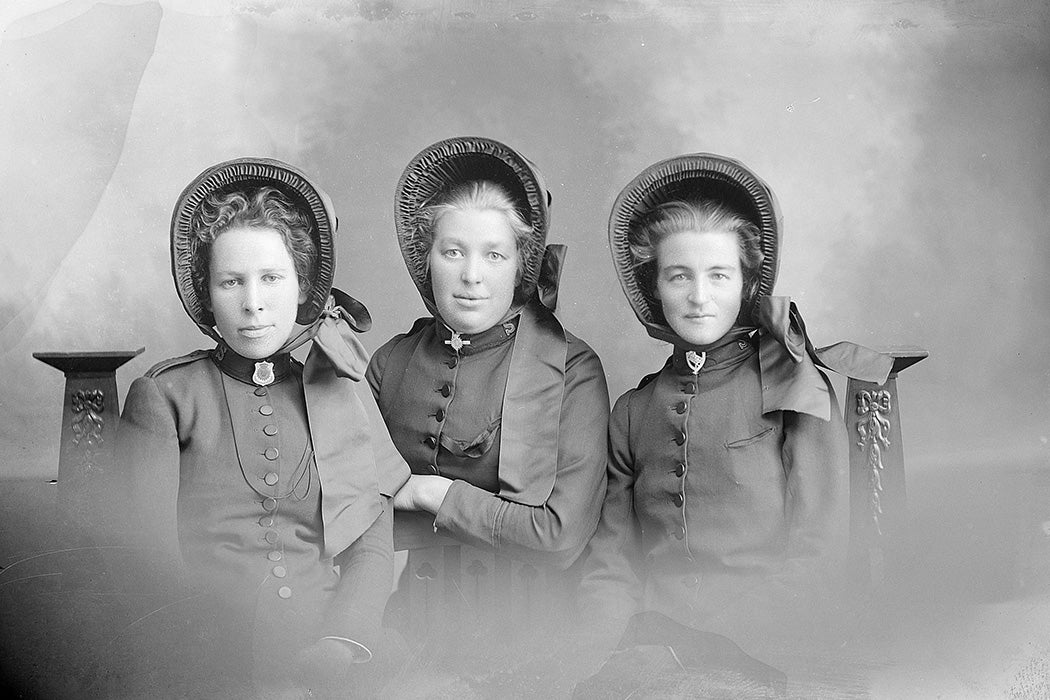In the late nineteenth century, some women donned unconventional clothes and participated in activities normally closed to their gender. Among them were “girl reporters,” the “New Woman,” cross-dressing modernists, and… Salvation Army “lassies.” Historian Jennifer Le Zotte describes how the women of the Salvation Army used the organization’s uniforms to go where respectable women typically feared to tread.

Founded in 1865 Britain by Methodist preacher William Booth, the Salvation Army adopted military-style uniforms as a deliberate form of rebellion against the conformity that its leaders saw in the Christians around them. Booth advised his “soldiers” not to be afraid to “be odd.” His wife, Catherine Booth, complained about fellow Protestants who believed themselves pure because they “have never done anything that is unconventional and untraditional.” By 1890, Le Zotte writes, the organization’s officers were required to wear its bold blue, yellow, and red uniforms whenever they were out in public, and rank-and-file members were advised to wear them at least fifteen times a week. Soon, the Army’s US branch had its own international millinery business, producing uniforms for its tens of thousands of members.
The uniforms helped minimize class tensions between the working-class men and women, who made up the majority of the organization, and the middle-class, educated reformers who also joined it. They were also a nod toward gender equality, with women’s versions similar to men’s, a skirt replacing trousers. Maud Ballington Booth, a leader of the organization who had married into its founding family, claimed that “woman warriors” in uniform would become a “mighty power.” She also argued that, in a potentially hazardous urban environment, the “distinctive dress throws around a woman a shield which says to everyone: ‘my business is salvation.’”
Indeed, Salvation Army “lassies” preached in saloons, marched in the streets, and sold the organization’s newsletter, the American War Cry. Some were arrested for their public activity and took pride in becoming “jailbirds for Jesus.”

“By forfeiting high fashion in favor of the plain blue uniform, lassies participated in parts of city life otherwise off-limits to ‘respectable’ women,” Le Zotte writes.
Not everyone appreciated the uniforms. Some disliked associating religion with war. Others decried “gaily dressed ‘salvation lassies’ swinging tambourines,” as one Protestant minister, who preferred more dignified forms of worship, put it. The New York Times opined in 1892 that “who ever joins the Salvation Army bids good-bye to respectability as much as if he went upon the stage of a variety show.”
Weekly Newsletter
In fact, the organization didn’t shy away from pop culture, adapting vaudeville, movies, and lively music into their mission to save souls and provide material resources. Le Zotte notes that the first Army leaders to arrive in the US—Commissioner George Railton and seven “hallelujah girls”—made their first public appearance at a “well-known—and less than reputable—concert saloon.”
While the women of the Salvation Army disapproved of the frivolous fashion of the New Woman, their willingness to play music and speak up in such a setting earned them many of the same enemies.
Support JSTOR Daily! Join our new membership program on Patreon today.







